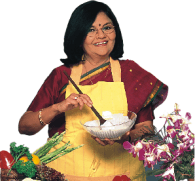Nutritional Facts of papad poha recipe | Diwali jar snack | quick Gujarati papad poha chivda | Calories in papad poha recipe | Diwali jar snack | quick Gujarati papad poha chivda |
This calorie page has been viewed 13399 times

| Value per cup | % Daily Values | |
| Energy | 248 kcal | 12% |
| Protein | 5.0 g | 8% |
| Carbohydrates | 29.5 g | 11% |
| Fiber | 1.88 g | 6% |
| Fat | 12.25 g | 20% |
| Cholesterol | 0.0 mg | 0% |
| VITAMINS | ||
| Vitamin A | 93.2 mcg | 9% |
| Vitamin B1 (Thiamine) | 0.1 mg | 10% |
| Vitamin B2 (Riboflavin) | 0.0 mg | 2% |
| Vitamin B3 (Niacin) | 2.6 mg | 19% |
| Vitamin C | 1.5 mg | 2% |
| Vitamin E | -0.6 mg | -8% |
| Folic Acid (Vitamin B9) | 1.7 mcg | 1% |
| MINERALS | ||
| Calcium | 26.3 mg | 3% |
| Iron | 6.4 mg | 34% |
| Magnesium | 0.0 mg | 0% |
| Phosphorus | 0.0 mg | 0% |
| Sodium | 7.9 mg | 0% |
| Potassium | 69.4 mg | 2% |
| Zinc | 0.2 mg | 1% |
Percent Daily Values are based on a 2000 calorie diet. Your daily values may be higher or lower depending on your calorie needs.

पापड़ पोहा की कैलोरी के लिए कैलोरी - हिन्दी में पढ़ें (Calories for Papad Poha, Diwali Jar Snack in Hindi)
Click here to view Papad Poha, Diwali Jar Snack
Calories in other related recipes
















